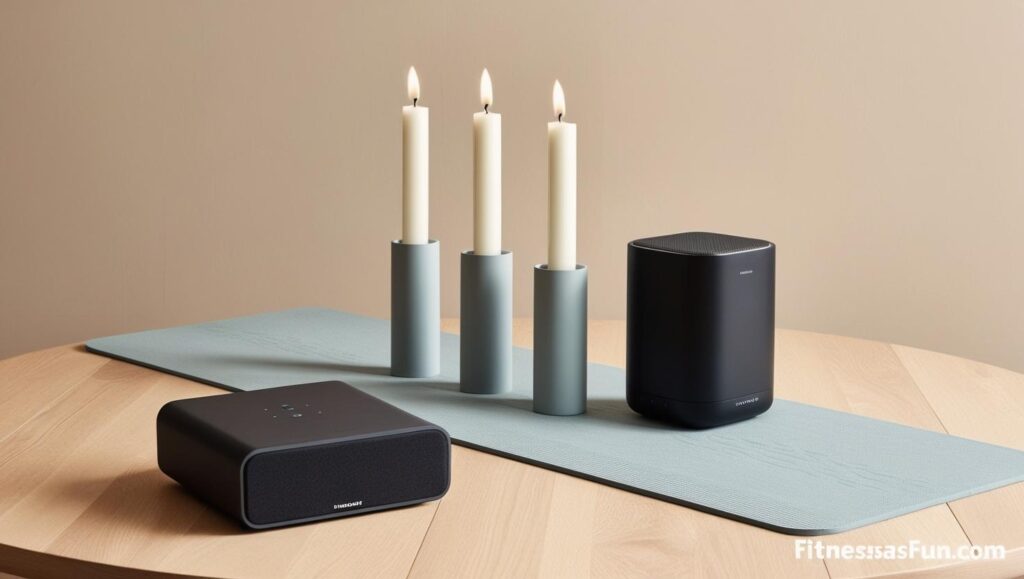What You’re About to Discover
Sound healing isn’t just some wellness trend cooked up by influencers. It’s a centuries-old practice making a legitimate comeback — especially among people who are tired of meds, burnout, and mental noise. But does it actually help relieve stress? This article takes you, a total beginner, through what sound healing is, how it works, and whether it’s worth exploring for your stress relief.
I Was Skeptical Too
Let’s keep it real — I used to think sound healing was just pretty noise with incense on the side. I’m a data-minded person. But after months of unshakable tension, shallow breathing, and a head that felt like static — I tried a 30-minute session with Tibetan singing bowls. I walked out… lighter. Not “cured.” But noticeably unburdened.
So I went deeper.
What Is Sound Healing, Really?

At its core, sound healing uses vibrations and frequencies to calm the nervous system. Practitioners use instruments like:
- Tuning forks
- Crystal singing bowls
- Tibetan bowls
- Gongs
- Chimes or even voice (mantras, humming)
The goal? Guide your brain into deeper states — from beta (alert, stressed) to alpha, theta, or even delta (deep relaxation and healing). It’s not magic. It’s physics meeting biology.
Why Sound Impacts Stress

Here’s how sound healing works on stress:
- Slows your brainwaves: Deep, resonant tones help move your mind from chaotic thinking to calm awareness.
- Activates the parasympathetic nervous system: That’s the rest-and-digest state. Your heart rate slows. Breathing deepens. Cortisol drops.
- Interrupts the overthinking loop: Vibrational sound gives your mind something to focus on without thinking.
Clinical research is catching up. Studies show measurable reductions in anxiety, fatigue, and heart rate variability after sound-based therapies. Not placebo — physiological response.
Can It Work for You?
Here’s the truth: Sound healing won’t fix your problems. But it can:
- Reduce physical tension
- Help you sleep deeper
- Ease anxiety symptoms
- Make meditation easier
- Release stuck emotions
It’s especially helpful if you:
- Struggle to sit still in meditation
- Are overwhelmed by digital noise
- Need relief without relying on pills
Your First Session: What to Expect

You don’t need to chant. You don’t even need to believe in chakras. Just show up.
A typical first session:
- You lie on a mat, fully clothed
- The practitioner plays instruments around you or on your body
- Sessions last 30 to 60 minutes
- You may feel tingles, emotion release, or deep relaxation
No touching. No pressure. Just sound, stillness, and surrender.
Can You DIY Sound Healing at Home?
Yes — and many beginners start here.
Simple ways to try it:
- YouTube: Search “528Hz sound healing” or “singing bowl meditation”
- Spotify/Apple Music: There are full sound healing albums
- Apps: Insight Timer, Calm, or MyNoise have great soundscapes
- Try humming or chanting OM: The vibrations alone are soothing
Start with 10 minutes. Eyes closed. Headphones on. Let it wash over you.
Any Risks or Side Effects?
For most people, no — it’s safe and gentle. But:
- Some may feel emotional release (crying is normal)
- Those with sound sensitivity or trauma triggers should go slow
- Always hydrate after sessions — sound can move energy
If you’re dealing with serious mental health issues, think of sound healing as a complement, not a cure.
Final Thoughts: Is It Worth Trying?

Yes — if you’re open to it.
Sound healing isn’t woo. It’s a return to something primal and deeply human. Before drugs and diagnoses, people used sound to process pain, connect, and feel peace.
If stress has its grip on you and nothing else has helped…
Why not lie back, close your eyes, and let sound do the work?
You might just hear your nervous system exhale.
Cited Sources
- NIH Study: Effects of Singing Bowl Sound Meditation on Mood, Tension, and Well-being
- Journal of Evidence-Based Integrative Medicine
- Interview with certified sound healer Anja Striberny (2024)
FAQs
Q: Is sound healing the same as music therapy?
No. Music therapy is structured and clinical. Sound healing is more meditative and energetic.
Q: How many sessions until I feel something?
Some feel relief immediately. Others need 2–3 sessions. Consistency helps.
Q: Is this safe during pregnancy or illness?
Usually yes, but consult your doctor if you have specific conditions or implants.
Q: Can I combine it with yoga or breathwork?
Absolutely. In fact, many yoga classes end with sound baths for this reason.






